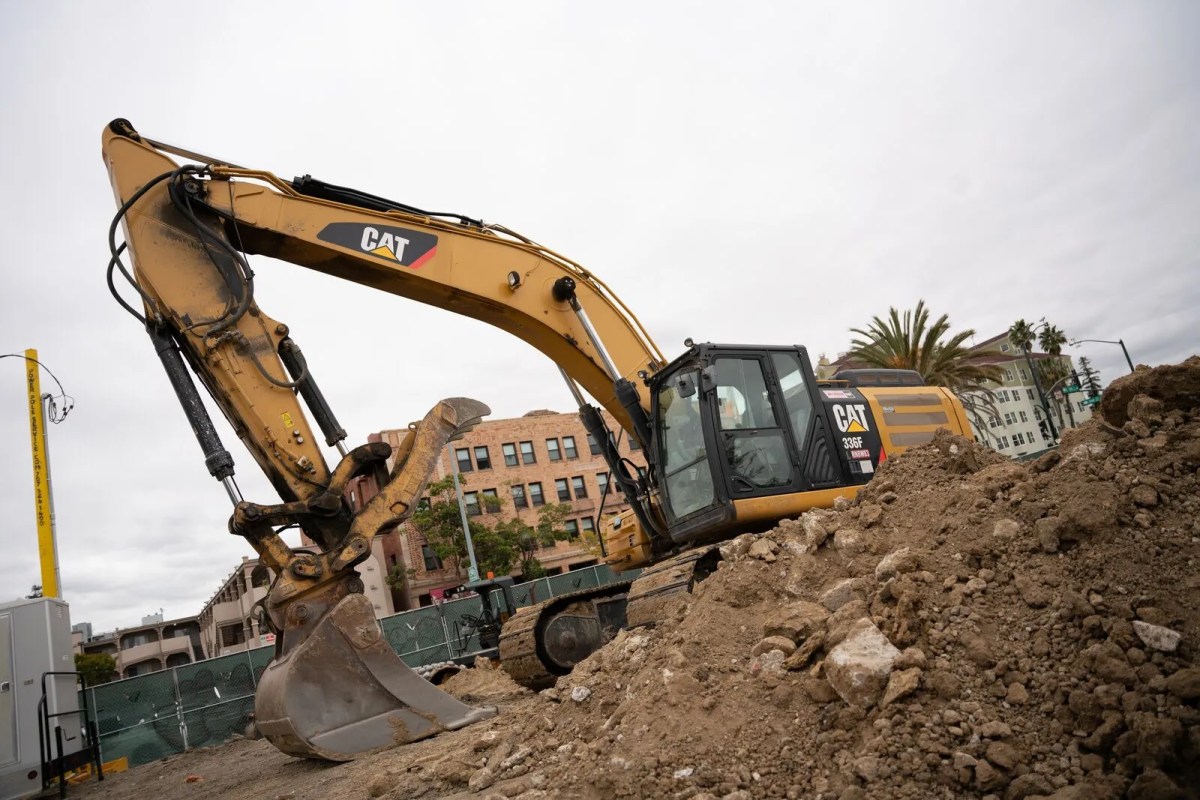The number of homes built in Oakland fell last year, with fewer building permits issued in 2023 than in any single year since 2015.
The drop reflects high construction costs and interest rates that have made it harder for developers to finance projects in Oakland and beyond. City officials say new funding sources could help boost building in 2024, especially of affordable housing.
In 2023, Oakland permitted 795 new homes. A bit over half of those were low-income housing, priced at a range of affordability levels.
Housing construction peaked in 2018 in Oakland. That year, the city permitted a whopping 4,617 new units, ushering in a building boom downtown and in surrounding neighborhoods. But notably, only 337 of the permits that year were for affordable housing—fewer than the number of low-income units permitted last year.
This year’s downturn “demonstrates the constrained financial environment under which housing developers are currently operating,” said William Gilchrist, Planning & Building Department director. Permits for larger apartment buildings decreased most significantly, compared to houses and other small properties.
Development had previously declined at the start of the COVID-19 pandemic too, but it appeared that the local industry had begun to rebound in 2022.
City staffers presented the new housing production numbers to the Planning Commission last Wednesday, part of an annual progress report that Oakland is required to submit to the state, tracking how well the city is doing on its “Housing Element” plan. The same report will be discussed at a City Council meeting later this year.
The Housing Element is an eight-year plan in which the city spells out how and where it plans to build enough housing to shelter existing and new residents and prevent displacement. For the current cycle, which runs from 2023 to 2031, Oakland had to figure out how to enable developers to build 26,251 new homes.
The progress report also takes a close look at construction of ADUs, a strategy Oakland and California have embraced in recent years as a cheaper and quicker method of increasing housing production across many neighborhoods. Permits for these backyard cottages, granny flats, and secondary units fell as well, from 287 in 2022 to 219 last year. However, more ADUs—242—were completed in 2023, the result of permits issued in previous years.
The number of permits the city issues is considered the most accurate representation of how much housing is getting built in Oakland at any given time. When a developer seeks a building permit, it usually means they’re ready to start construction.
Permitting “is the stage at which housing developers are most sensitive to rapidly escalating construction costs, higher interest rates, and depressed rents,” said Gilchrist.
The forces impacting the construction of market-rate and affordable housing overlap, but not completely. Affordable housing is usually funded by tax credits and government agencies, and Oakland typically has to issue the initial funds in order for developers to go ask for state money. So the amount of low-income housing that gets built in the city in a given year is a “reflection of the funds that the city has or has not had,” said Emily Weinstein, the city’s housing director. She said new funding sources and efforts could make 2024 a more productive year.
Weinstein noted that Oakland has just begun to give out money from Measure U, the 2022 infrastructure bond that will generate $350 million for affordable housing in the city. The city also created a new housing funding process that will set Oakland up to be more competitive with state awards like Homekey, she said. Another round of funding from that state program, which encourages the conversion of hotels into supportive housing, is expected this summer. Proposition 1 will also produce new money for housing facilities.
But “since the end of redevelopment agencies, we have not had a consistent funding source,” Weinstein said. “We essentially have a pipeline of projects ready to go”—if the money were available.
Housing advocates are also banking on an effort to put a regional housing bond on the November ballot—the first of its kind in the Bay Area. If passed, Oakland could receive between $382 million and $765 million, an unprecedented amount of money for affordable housing.
Many developers and architects say that market forces and public funding are not the only factors impeding building in Oakland. People working in the homebuilding industry often complain to The Oaklandside that the city’s permitting process can be slow and opaque.
Planning Commissioner Josie Ahrens noted at Wednesday’s meeting that the presentation lacked a “geographic analysis” revealing whether the new affordable housing is getting built in places that will further residential segregation or decrease it.
Weinstein responded that Oakland prioritizes projects located in sites that comply with the state’s criteria. But she said the city often has a different perspective on which locations are most inclusive.

